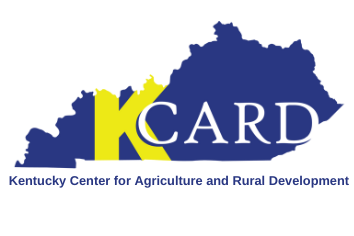In today’s farming landscape, running a successful agricultural operation means wearing many hats—grower, mechanic, manager, and financial decision-maker. Just like any other business, farms need clear metrics to track financial health, guide decision-making, and plan for the future. That’s where Key Performance Indicators (KPIs) and tools like the Farm Finance Scorecard come into play.
These tools give farmers the ability to assess their financial standing with clarity, spot areas for improvement, and take proactive steps toward long-term success.
Why KPIs Matter in Farm Business Management
Key Performance Indicators (KPIs) are essential metrics that help track and evaluate the financial and operational performance of your farm. They provide a data-driven view of how your business is performing, helping you identify what’s working—and what’s not.
Using KPIs regularly can help you:
Make better budgeting and investment decisions
Understand cash flow needs
Communicate more effectively with lenders or investors
Plan for growth and succession
Core KPIs Every Farm Should Monitor
Profitability KPIs
These show whether your farm is making money after covering all its expenses.
Gross Margin: Revenue minus the cost of goods sold (like seed, feed, fertilizer). This helps gauge how profitable your production is before fixed costs.
Net Profit Margin: Net income as a percentage of total revenue. A strong indicator of overall financial efficiency.
Return on Assets (ROA): Measures how effectively your farm is using its assets to generate profit. Higher ROA means better use of resources.
Liquidity KPIs
Liquidity shows how easily your farm can meet its short-term obligations.
Current Ratio: Current assets ÷ current liabilities. A ratio above 1.5 is typically a good sign that your farm can cover its immediate expenses.
Working Capital: Current assets minus current liabilities. Positive working capital means you have a cushion to operate through seasonal fluctuations.
Solvency KPIs
Solvency indicators show your farm’s long-term financial stability and debt management.
Debt-to-Equity Ratio: Total liabilities ÷ equity. A lower ratio indicates less risk and more financial flexibility.
Equity-to-Asset Ratio: Equity ÷ total assets. This tells you how much of the business you truly own and helps assess long-term viability.
Efficiency KPIs
Efficiency KPIs highlight how well your resources are being used to generate income.
Asset Turnover Ratio: Total revenue ÷ total assets. A higher ratio suggests efficient use of assets to drive sales.
Labor Efficiency: Output (or Income) ÷ Number of Employees. This KPI measures how effectively labor resources are being used to produce goods or generate revenue. A higher value indicates greater efficiency. This helps evaluate the return on your labor investment.
The Farm Finance Scorecard: Turning KPIs Into a Clear Picture
The Farm Finance Scorecard is a structured tool that helps farmers assess financial health across all key areas by organizing KPIs into a simple and visual format. Think of it as a financial report card for your farm.
How It Works:
Score Your KPIs: Each financial KPI is rated based on benchmarks—green (strong), yellow (watch), or red (needs attention).
Category Breakdown: KPIs are grouped into four main financial health areas: profitability, liquidity, solvency, and efficiency.
Visual Snapshot: The scorecard shows where your farm stands and helps identify trends or red flags before they become serious issues.
Benchmarking: Compare your scores with industry standards or past performance to track progress over time.
Benefits of Using the Farm Finance Scorecard
Quick Insights: Spot financial strengths and weaknesses at a glance.
Better Decisions: Use the data to plan investments, reduce expenses, or renegotiate financing.
Credibility With Lenders: A scorecard shows you’re serious about financial management—something banks and investors love.
Sustainability: Helps build a business model that can weather tough seasons and changing markets.
Goal Setting: Track improvements year over year and set SMART goals based on KPI results.
Final Thoughts
Farming is a tough business, and success depends on more than just good yields—it requires sharp financial insight. By focusing on Key Performance Indicators and utilizing tools like the Farm Finance Scorecard, farm owners and managers can take control of their financial future.
Monitoring your farm’s KPIs consistently will help you spot opportunities, reduce risks, and make confident, informed decisions. Whether you're planning for next season or the next generation, these tools will keep your farm financially healthy and headed in the right direction. If you’d like help developing your financial statements or understanding your numbers, feel free to contact KCARD at (859) 550-3972 or kcard@kcard.info.

